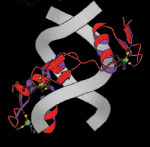Investing in Discovery

The investments of the National Institute of General Medical Sciences (NIGMS) in broad and diverse areas of basic research have built a strong foundation of knowledge for biomedicine. Because science is an activity driven by human insight, the Institute has always believed that providing career stability and workforce diversity are key strategies for maintaining a healthy research enterprise.
I, personally, have been fortunate to experience the benefits of these investments throughout my scientific career. As an undergraduate, graduate student, and postdoctoral fellow, my training and research were supported through research grants to my advisors. When I started my independent career, my research projects were funded through a then-new program directed to beginning faculty members.
NIGMS Core Principles
- Sponsor and promote basic research as an essential aspect of science to improve human health.
- Foster innovation and discovery to unveil new knowledge that will lead to future transformations in medicine.
- Employ integrative and interdisciplinary approaches in the pursuit and dissemination of scientific knowledge.
- Develop a biomedical research workforce representative of American society at large and actively support training of the next generation of scientists.
- Ensure stability and rigor in the nation's basic biomedical research enterprise and infrastructure.
- Communicate openly with the scientific community and the public about the needs, value, and impact of the biomedical research enterprise.
As with most basic scientists, my research followed a winding path of discovery. Early in my career, I was fortunate to get to work on grant-supported projects to explore a diversity of scientific topics. These ranged from the development of new physical methods to analyses of the fundamental chemical basis of enzyme action, the study of metalloprotein structures, and biological approaches to understanding gene regulation. Much of this research was greatly enhanced by the molecular biology revolution, which itself had been driven substantially by earlier NIGMS-funded studies.
As a faculty member, I saw first-hand the tremendous impact of NIGMS-supported training grants at my academic institution, as well as the influence of these and other programs on the recruitment of a diverse group of students into research. Later in my career, I witnessed how NIGMS-directed programs could bring together larger groups of scientists to tackle important problems using emerging concepts and technologies.

As Director of NIGMS, my job now is to look ahead. I have been entrusted to assure that NIGMS makes its financial investments with a careful eye toward their long-term impact on the research enterprise and the scientists who do the research.
What lies ahead? The incredible complexity of biology is something that tantalizes and challenges us. We recognize that most biological processes involve large numbers of components, interacting directly and indirectly. But we do not yet have all the tools, both technical and intellectual, to understand such systems in a predictive sense. Biological complexity, nuances of our genomic lexicon, and many other mysteries of biomedicine are waiting to be solved to improve health and fight disease.
Furthermore, we know that fundamental discoveries are yet to be made. While no one can predict which basic findings will be the ones that shift paradigms or create the medical breakthroughs of tomorrow, I am confident that such discoveries will be made over the period of time covered by this plan.
All of us see science evolving at an ever-increasing rate as new advances build on those from the past, and it is critical that the support of science adapts to this rapidly changing landscape. We must take stock of the overall system of biomedical research funding and examine how precious taxpayer resources allocated to NIGMS can be used to support the scientific enterprise—today and into the future, harnessing the creativity of a broad group of scientists.
We developed the NIGMS Strategic Plan 2008–2012 through a comprehensive consultation process that gathered perspectives and opinions from scientists, policymakers, scientific and professional societies, the general public, and Institute staff. The plan articulates the Institute’s core principles and shows how it will make its strategic investments to ensure that a stable basic research environment will endure to provide the knowledge needed to prevent disease and improve health.
Importantly, this plan is not a call for change for change’s sake. In developing it, we saw an opportunity to examine critically our own values and progress, and we intend the plan to serve as a tool for helping us map a course toward solving the great challenges facing biomedicine. Through existing programs and new initiatives, NIGMS aims to maximize the benefit of the public’s basic research investments in human health.

Jeremy M. Berg, Ph.D.
Director, NIGMS
November 2007
Next: Why Basic Research?

